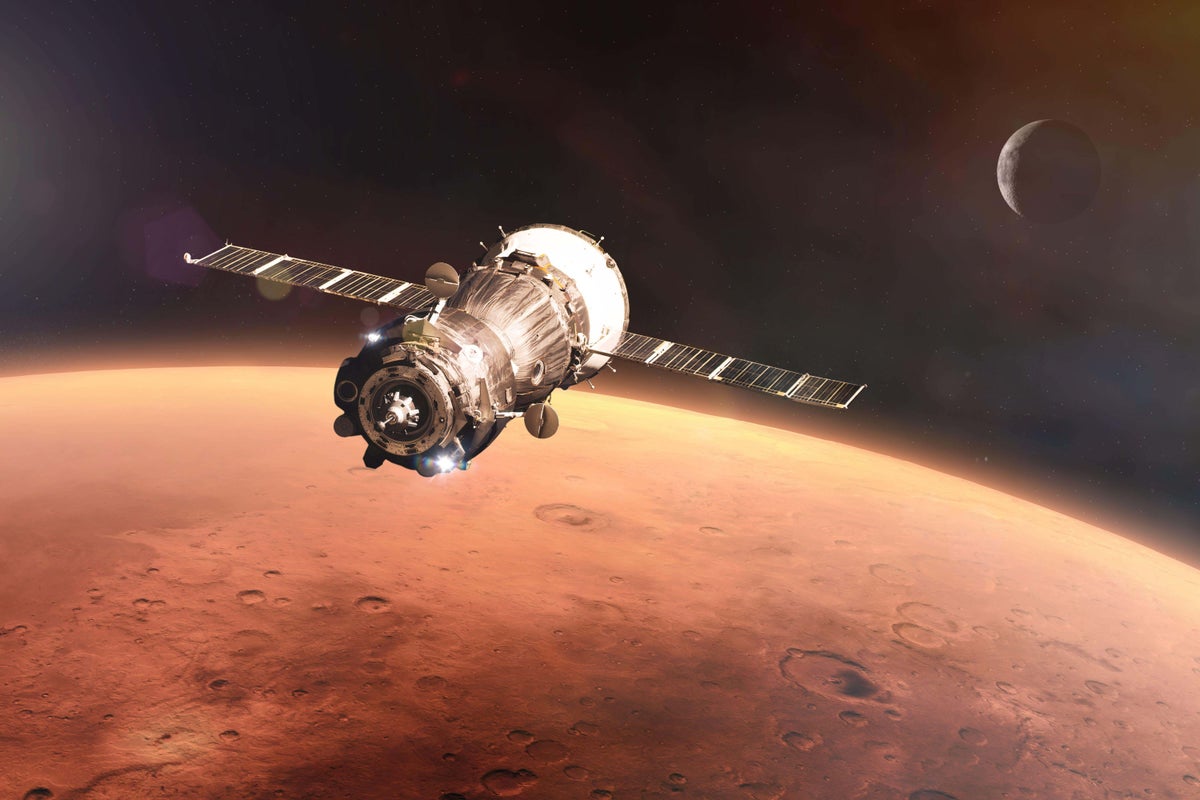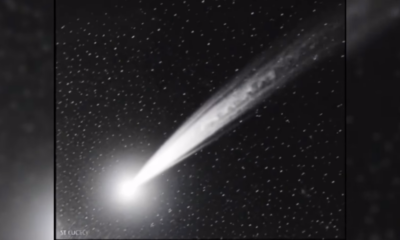Science
NASA Unveils Promising Evidence of Ancient Life on Mars

NASA has announced significant findings that may provide evidence of past life on Mars. Scientists have detected unusual mineral patterns, described as “leopard spots,” in the clay-rich rocks located at the edge of Jezero Crater. This area, once a Martian lake nourished by ancient river systems, is currently the exploration site of the NASA Perseverance Rover. The discovery has sparked renewed interest in the possibility of microbial life on the Red Planet.
The unique mineral patterns bear striking similarities to the traces left behind by microorganisms on Earth. While the exact nature of these formations remains uncertain, the findings have reignited discussions about the potential existence of life on Mars and whether it could still survive in its harsh environment today.
Investigating Mars’ Past and Present Conditions
To understand the implications of these discoveries, it is essential to examine Mars’ history. Early Earth and early Mars shared comparable conditions, including atmospheres and magnetic fields that provided protection from harmful solar radiation, as well as bodies of liquid water on their surfaces. These factors are believed to have contributed to the emergence of life on Earth, leading scientists to wonder if a similar process could have occurred on Mars.
Over time, however, Mars lost its magnetic field as its core cooled, exposing the planet to harmful solar radiation that eroded its atmosphere. This transition transformed Mars into the cold and arid landscape recognized today. Many scientists believe that the surface conditions are currently too inhospitable for life, prompting the search for microbial organisms in underground or icy regions where conditions may be more favorable.
Potential habitats for Martian microbial life include caves, beneath ice sheets at the poles, and deep underground. These environments have Earth analogues that host thriving microorganisms, suggesting that if life once existed on Mars, it could still be found in these extreme niches.
Exploring the Martian Subsurface
The Martian subsurface is seen as one of the most promising locations for potential life, extending from a few meters to several kilometers below the surface. While the outer layers have been inhospitable, the deeper subsurface may offer a more stable environment conducive to life. On Earth, significant microbial life exists underground, thriving in rock crevices. These ecosystems rely on lithoautotrophs—microbes that derive energy from the minerals in rocks.
Methane, a byproduct associated with certain lithoautotrophs, has also been detected on Mars, although its presence does not definitively indicate life. The potential for a deep biosphere on Mars relies on factors such as the availability of liquid water, energy sources, and suitable temperatures. Evidence suggesting liquid water exists below the Martian surface remains a topic of ongoing research and debate.
Scientists are studying various Earth environments that could serve as analogues for Mars. Locations such as the Atacama Desert in South America, sediments at Lake Salda in Turkey, and the salts found in Utah’s Pilot Valley provide valuable insights into how life might survive under Martian conditions. Researchers are also conducting controlled laboratory experiments, utilizing specialized “Mars chambers” to simulate the planet’s environmental factors, including radiation and atmospheric conditions.
While the recent findings from NASA represent the most compelling evidence of potential life on Mars to date, there is still no conclusive proof of past or present life. The “leopard spots” offer a tantalizing glimpse into Mars’ history, but more investigation is necessary to draw definitive conclusions.
Upcoming missions may play a crucial role in this quest. The European Space Agency (ESA) plans to launch the ExoMars Rosalind Franklin rover, which will drill up to two meters below the Martian surface. This mission presents an opportunity to explore the shallow subsurface for living microorganisms. However, many experts agree that deeper exploration will be necessary to fully understand the potential for life on Mars.
The challenge of probing the Martian deep subsurface remains significant, mirroring the difficulties faced in exploring Earth’s own subterranean ecosystems. As scientists continue to investigate both Earth and Mars, the search for extraterrestrial life remains a captivating and monumental endeavor.
-

 World2 days ago
World2 days agoCoronation Street’s Shocking Murder Twist Reveals Family Secrets
-

 Entertainment4 months ago
Entertainment4 months agoKate Garraway Sells £2 Million Home Amid Financial Struggles
-

 Entertainment3 months ago
Entertainment3 months agoAnn Ming Reflects on ITV’s ‘I Fought the Law’ Drama
-

 Health3 months ago
Health3 months agoKatie Price Faces New Health Concerns After Cancer Symptoms Resurface
-

 Entertainment3 weeks ago
Entertainment3 weeks agoCoronation Street Fans React as Todd Faces Heartbreaking Choice
-

 World3 weeks ago
World3 weeks agoBailey Announces Heartbreaking Split from Rebecca After Reunion
-

 Entertainment5 days ago
Entertainment5 days agoTwo Stars Evicted from I’m A Celebrity Just Days Before Finale
-

 World5 days ago
World5 days agoKevin Sinfield Exceeds Fundraising Goal Ahead of Final Marathons
-

 Entertainment3 months ago
Entertainment3 months agoCoronation Street’s Carl Webster Faces Trouble with New Affairs
-

 Entertainment3 months ago
Entertainment3 months agoWhere is Tinder Swindler Simon Leviev? Latest Updates Revealed
-

 Entertainment4 months ago
Entertainment4 months agoMarkiplier Addresses AI Controversy During Livestream Response
-

 Science2 months ago
Science2 months agoBrian Cox Addresses Claims of Alien Probe in 3I/ATLAS Discovery





















